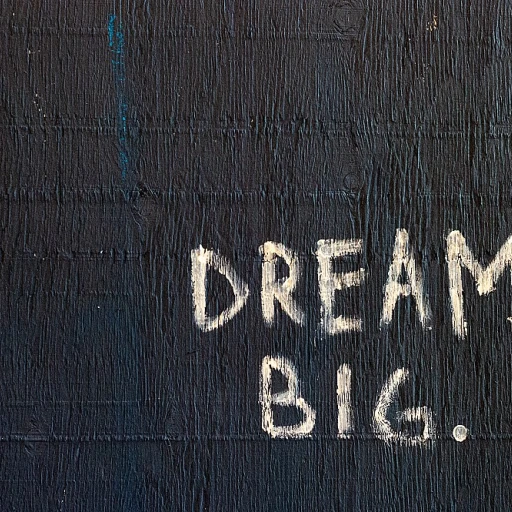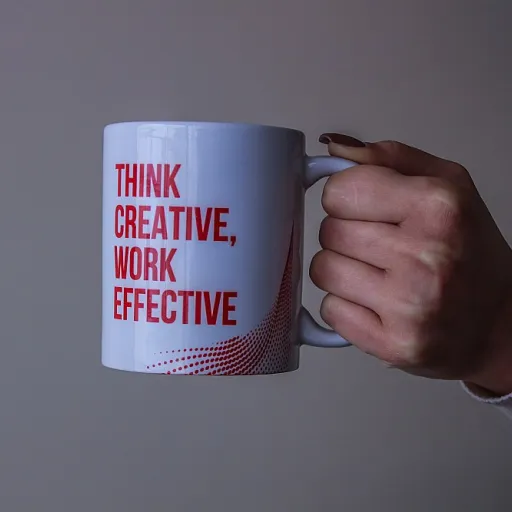
Understanding the role of hr tech stack in employee retention
The foundation of employee retention in the digital era
Today’s organizations face a complex landscape when it comes to keeping employees engaged and reducing turnover. The right HR tech stack is no longer just a nice-to-have—it’s a necessity for effective management and long-term employee retention. By leveraging modern technology and digital tools, companies can address key pain points in the employee experience and streamline essential processes.
Why technology matters for retention
Retention is about more than just payroll and benefits. It’s about creating a workplace where people feel valued, supported, and empowered. HR management software and platforms help organizations track employee data, monitor performance, and ensure compliance with regulations. These systems also support change management by making it easier to adapt to evolving needs.
- Applicant tracking systems streamline hiring and onboarding, setting the stage for a positive experience from day one.
- Performance management tools provide ongoing feedback and recognition, boosting employee engagement.
- Payroll benefits solutions ensure accuracy and transparency, reducing frustration and errors.
- Data-driven insights help leaders make informed decisions about people and processes.
Building a solid tech stack for people-first organizations
A well-designed technology stack brings together various types tech—from tracking systems to management software—to create a seamless experience for both HR teams and employees. The right solutions help organizations save time, reduce manual work, and focus on what matters most: supporting their people. When systems are integrated and data flows smoothly, HR can proactively address issues before they impact retention.
For a deeper dive into proven approaches, check out this resource on effective strategies for employee retention.
Key components of an effective hr tech stack
Essential building blocks for a modern HR technology stack
Creating a solid tech stack for human resources is about more than just picking the latest digital tools. The right combination of management software, platforms, and systems can help address pain points, streamline processes, and improve the employee experience. Here are the core types of tech and solutions that form the backbone of an effective HR stack:
- Applicant tracking systems (ATS): These platforms help manage the recruitment process, from posting jobs to tracking candidates and onboarding new employees. A reliable ATS saves time and ensures a smooth hiring process.
- Performance management software: Monitoring employee performance is crucial for engagement and retention. These tools enable data-driven decision making, goal setting, feedback, and performance reviews, all in one place.
- Payroll and benefits management: Managing payroll benefits and compliance is complex. Integrated payroll solutions and benefits administration platforms help ensure accuracy, reduce errors, and support compliance with regulations. For more on compliance, check out this HR compliance checklist for better employee retention.
- Employee engagement platforms: These digital tools are designed to boost employee engagement through surveys, recognition programs, and communication channels. They help HR teams gather employee data and act on feedback.
- Learning management systems (LMS): Continuous development is key to retention. LMS platforms offer training, upskilling, and compliance courses, supporting both employee growth and organizational goals.
- HR analytics and reporting tools: Data is at the heart of a modern HR tech stack. Analytics platforms help track key metrics, identify trends, and support data-driven strategies for retention and performance management.
Why integration matters in your technology stack
Each system in your HR stack should work together seamlessly. When platforms and software are integrated, it reduces manual work, improves data accuracy, and creates a unified view of employee data. This integration supports better decision making and enhances the overall employee experience.
Choosing the right solutions for your organization
Every organization has unique needs. When selecting tech tools, consider factors like scalability, ease of use, and how well they align with your existing processes. A well-chosen technology stack not only helps with compliance and management but also empowers people and supports change management as your business evolves.
| Component | Main Purpose | Key Benefit |
|---|---|---|
| Applicant Tracking | Recruitment & Onboarding | Streamlines hiring process |
| Performance Management | Employee Performance | Enables data-driven feedback |
| Payroll & Benefits | Compensation & Compliance | Ensures accuracy and legal compliance |
| Engagement Platforms | Employee Engagement | Boosts satisfaction and retention |
| Learning Management | Training & Development | Supports employee growth |
| Analytics Tools | Data & Reporting | Informs strategic decisions |
Building a smarter HR tech stack is not just about technology, but about supporting your people, improving processes, and driving better retention outcomes.
Integrating your hr tech stack for seamless workflows
Connecting your HR technology for real impact
When organizations invest in a solid tech stack, it’s not just about having the latest digital tools. The real value comes from integrating these systems so that data, processes, and people work together seamlessly. Many companies face pain points when their management software, payroll, benefits, and applicant tracking systems operate in silos. This fragmentation can slow down decision making, create compliance risks, and make it harder to support employee engagement and performance management.
Why integration matters for employee retention
Integrated HR platforms help human resources teams manage employee data, performance, and payroll benefits in one place. This unified approach saves time, reduces errors, and improves the employee experience. For example, when performance management tools connect with payroll and benefits software, managers can quickly reward top performers and ensure accurate compensation. This kind of data driven process helps build trust and transparency.
- Centralized employee data – All information is stored in one system, making it easier to track employee progress and compliance.
- Automated workflows – Routine tasks like onboarding, time tracking, and benefits enrollment are streamlined, freeing up HR to focus on people, not paperwork.
- Improved reporting – Integrated platforms provide a complete view of the workforce, supporting better management and retention strategies.
Choosing the right tech tools for seamless workflows
Not all HR technology stacks are created equal. When evaluating solutions, look for platforms that offer open APIs or built-in integrations with your existing systems. This flexibility allows you to connect applicant tracking, performance management, and payroll solutions without duplicating data or manual entry. Change management is also crucial—ensure your team is trained on new software and understands how these tools help improve employee engagement and retention.
For organizations looking to identify and address retention risks, leveraging integrated employee feedback and survey tools can provide actionable insights. These platforms help you spot trends, measure employee satisfaction, and take proactive steps to support your people.
Integration checklist for your HR tech stack
| System | Key Integration Benefit |
|---|---|
| Applicant Tracking | Smooth onboarding and data transfer to HRIS |
| Payroll & Benefits | Accurate, timely compensation and compliance |
| Performance Management | Link rewards to measurable outcomes |
| Employee Engagement Tools | Real-time feedback for data driven decision making |
Using analytics to identify retention risks
Turning Employee Data into Actionable Insights
Modern HR technology stacks generate a wealth of employee data, from performance management metrics to payroll and benefits records. The challenge for management is not just collecting this information, but using it to spot trends and address pain points before they impact retention. Data-driven decision making is now essential for human resources teams aiming to create a positive employee experience and reduce turnover.Key Analytics Tools and Platforms
A solid tech stack should include systems and digital tools that help track employee engagement, performance, and satisfaction. Here are some types of tech and software commonly used:- Performance management software – Tracks goals, feedback, and reviews to identify high and low performers.
- Employee engagement platforms – Collects real-time feedback and pulse surveys to gauge morale.
- Applicant tracking systems – Monitors hiring trends and onboarding success, which can impact long-term retention.
- Payroll and benefits management tools – Ensures compliance and helps spot issues with compensation or benefits that may drive attrition.
Using Analytics to Spot Retention Risks
By integrating these solutions into your technology stack, HR teams can:- Identify departments or teams with higher turnover rates
- Monitor employee engagement scores over time
- Analyze the impact of benefits and payroll changes on retention
- Track performance trends to support proactive management
Building a Data-Driven Retention Process
To get the most from your HR tech stack, it’s important to:- Regularly review analytics dashboards and reports
- Share insights with leadership and managers to drive change management
- Use data to personalize the employee experience and address individual needs
- Ensure all platforms and systems are integrated for seamless data flow
Personalizing the employee experience through technology
Creating Tailored Journeys with Digital Tools
Personalizing the employee experience is no longer a luxury—it's a necessity for organizations aiming to boost retention. Today’s HR technology stack offers a range of tools and platforms that help tailor every stage of the employee journey, from onboarding to ongoing development. Digital solutions like performance management software, applicant tracking systems, and employee engagement platforms allow human resources teams to gather and analyze employee data. This data-driven approach helps identify individual needs, preferences, and pain points, making it possible to deliver more relevant support and benefits.- Onboarding: Customizable onboarding platforms help new hires feel welcome and informed, reducing early turnover.
- Learning & Development: Learning management systems (LMS) can recommend courses based on employee performance and career goals.
- Feedback & Recognition: Digital feedback tools and recognition platforms foster a culture of appreciation, which is key for engagement.
- Payroll & Benefits: Self-service payroll benefits software gives employees control and transparency over their compensation and perks.
Leveraging Data for Individualized Support
A solid tech stack enables management to use real-time data for more informed decision making. For example, analytics platforms can flag when employees might be at risk of disengagement or turnover. This allows HR to intervene with targeted solutions, such as flexible work arrangements or tailored benefits packages. Integrating these systems ensures that employee data flows seamlessly between platforms, reducing manual processes and compliance risks. The right stack tech also supports change management by making transitions smoother for people and teams.Enhancing Engagement with the Right Tools
Choosing the right types of tech and management software is crucial. Not every tool fits every organization, so it’s important to assess which digital tools align with your company’s culture and goals. Look for solutions that:- Support ongoing communication and feedback
- Enable personalized learning and career development
- Integrate with existing HR systems for a unified experience
- Help track employee engagement and performance over time
Best practices for maintaining and evolving your hr tech stack
Continuous improvement and regular audits
A solid tech stack for human resources is not a set-it-and-forget-it solution. Regularly auditing your systems, platforms, and digital tools helps ensure they remain aligned with your organization’s goals and employee needs. This means reviewing your management software, applicant tracking systems, and payroll benefits solutions to identify gaps or outdated processes. Periodic audits also help maintain compliance and data security, both of which are critical for employee trust and retention.Staying current with technology trends
The HR technology landscape evolves quickly. To keep your stack tech effective, stay informed about new types of tech, tools, and software that can address emerging pain points. For example, integrating data-driven performance management platforms or advanced employee engagement solutions can help you respond to changing workforce expectations. Regularly evaluating your technology stack ensures you’re leveraging the best solutions for employee experience and performance.Change management and employee training
Introducing new systems or updating existing ones requires careful change management. Employees and HR teams need time and support to adapt to new tools and processes. Providing ongoing training and clear communication helps people embrace technology, improving adoption rates and minimizing disruption. This approach also encourages feedback, which can highlight areas for further improvement in your tech stack.Data-driven decision making
Leverage employee data and analytics to guide your decisions about which tools and platforms to keep, upgrade, or replace. Monitoring key metrics related to employee engagement, performance, and retention helps you understand what’s working and where adjustments are needed. Using a tracking system to monitor these indicators ensures your HR solutions remain effective and relevant.Ensuring integration and scalability
As your organization grows, your HR technology stack should scale with it. Choose systems and platforms that integrate seamlessly with each other, reducing manual processes and data silos. This not only saves time but also improves the overall employee experience by creating smoother workflows across payroll, benefits, and performance management.- Schedule regular reviews of your HR tech stack
- Invest in ongoing training for HR teams and employees
- Monitor compliance and data privacy requirements
- Stay updated on new HR technology solutions
- Encourage feedback from employees about digital tools












